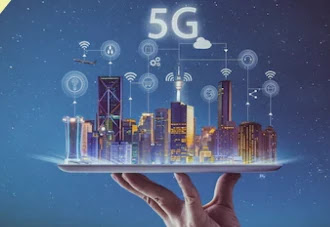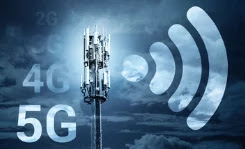Introduction:
I am pretty sure that you all are frustrated with the buffering situation on Youtube and playing a HD movie online or when loading a website, It takes much more time which is very annoying.And, You all know a new mobile technology "5G Technology" is going to be implemented to overcome these described issues.
But, there is a question in mind of every Indian people that when is 5G technology going to be introduced in India? What are it's advantages and how fast the internet will be? Do we need to purchase a new device which supports 5G?
But I am here to describe you this future technology which will bring a spectacular change in daily routine of humans. And, It will take the Indian technology to the next level.
Answer is By early 2021 and early 2022, 5G will be made available in India. It will have great data transfer speeds and high quality video conferencing and gaming with streaming in realtime.
Yes, we will have to purchase a new device which supports 5G.
The daily activities on internet which take 20-25 minutes, that'll be done in 3-5 seconds after coming 5G.
List of Contents:
History of 5G
-
How 5G works?
Advantages of 5G
(G means Generations. The bigger is G, the more fast network will be. Bigger means bigger in number)
History of 5G:
1G:
The first generation of mobile technology was introduced by Nippon telegraph and Telephone (NTT) in Tokyo by 1979. By 1984, NTT made 1G to cover whole of Japan. In 1984, US gave approval to first 1G operations and the Motorola's Dynatac became one of the first mobile phones to be used worldwide.
But 1G technology had a number of limitations such as:
- Bad Coverage
- Low Sound Quality
- It didn't support roaming
- No Internet support
- Only calling
2G :
When 2G came, It was called Cultural Revolution. It was launched under GSM standard in Finland by 1991.- It had good sound quality
- Calling with privacy was first introduced that timee
- Speed of 2G was 9.6kb/s-40kb/s
3G:
Advantages of 3G
- Data transfer in the form of data packets were being accessed by users.
- 3.1mb/s
- High data transfer rates
- Voice over Internet protocol introduced
4G:
It was first introduced in Stockholm, Sweden and Oslo, Norway in 2009 as the Long Term Evolution (LTE) 4G standard.- It gave high quality video
- It have access of internet to a billion of users.
- Speed of 4G: Around 100mbps
5G:
And now, it's time to talk about the speedbeast of internet, 5th generation technology.By early 2000s, developers knew that 3G or even 4G can't support lightning fast network. And the 5G is that network which can support lighting fast network.
Nowadays, 4G's latency is very high (around 40ms to 60ms), Latency is the delay before the transfer of data starts.
South Korea became the first nation to implement 5G network.
How 5G works?
In Simple way:
5G towers containing signal hosts don't send signals in bulk like other network and they send the signal directly to the receivers, which makes the internet more efficient and standardized.
5G works with millimeter waves which have something low coverage but fast speed. It works on OFDM (Orthogonal Fequency Division multiplexing), a method of sending a digital signal over different channels to overcome interference.
Detailed working:
5G organize design outlining 5G and 4G cooperating, with focal and nearby servers giving quickersubstance to clients and low idleness applications.
A portable system has two primary segments, the 'Radio Access Network' and the 'Center Network'.
The Radio Access Network - comprises of different sorts of offices including little cells, towers, poles and devoted in-building and home frameworks that associate versatile clients and remote gadgets to the fundamental center system.
Little cells will be a significant element of 5G organizes especially at the new millimeter wave (mmWave) frequencies where the association run is extremely short. To give a nonstop association, little cells will be conveyed in groups relying upon where clients require association which will supplement the large scale organize that gives wide-zone inclusion.
5G Macro Cells will utilize MIMO (numerous info, various yield) reception apparatuses that have different components or associations with send and get more information at the same time. The advantage to clients is that more individuals can all the while interface with the system and keep up high throughput. Where MIMO recieving wires utilize extremely enormous quantities of reception apparatus components they are regularly alluded to as 'huge MIMO', in any case, the physical size is like existing 3G and 4G base station radio wires.
The Core Network - is the portable trade and information arrange that deals with the entirety of the versatile voice, information and web associations. For 5G, the 'center system' is being updated to all the more likely incorporate with the web and cloud based administrations and furthermore incorporates appropriated servers over the system improving reaction times (diminishing inactivity).
A considerable lot of the propelled highlights of 5G including system work virtualization and system cutting for various applications and administrations, will be overseen in the center. The accompanying delineation shows instances of nearby cloud servers giving quicker substance to clients (film gushing) and low inactivity applications for vehicle crash evasion frameworks.
Advantages of 5G:
- Very low Latency (around 1 to 10ms)
- It can support a 100x increase in traffic capacity and network capacity
- speed: 600mbps to 1.5gbps
- One can download a hd movie in just 3-3.5 seconds
- There will be less traffic after 5G because vehicles can communicate to each other while driving
Conclusion:
5G can change our every activity of humans.














Awesome Information bro
ReplyDelete